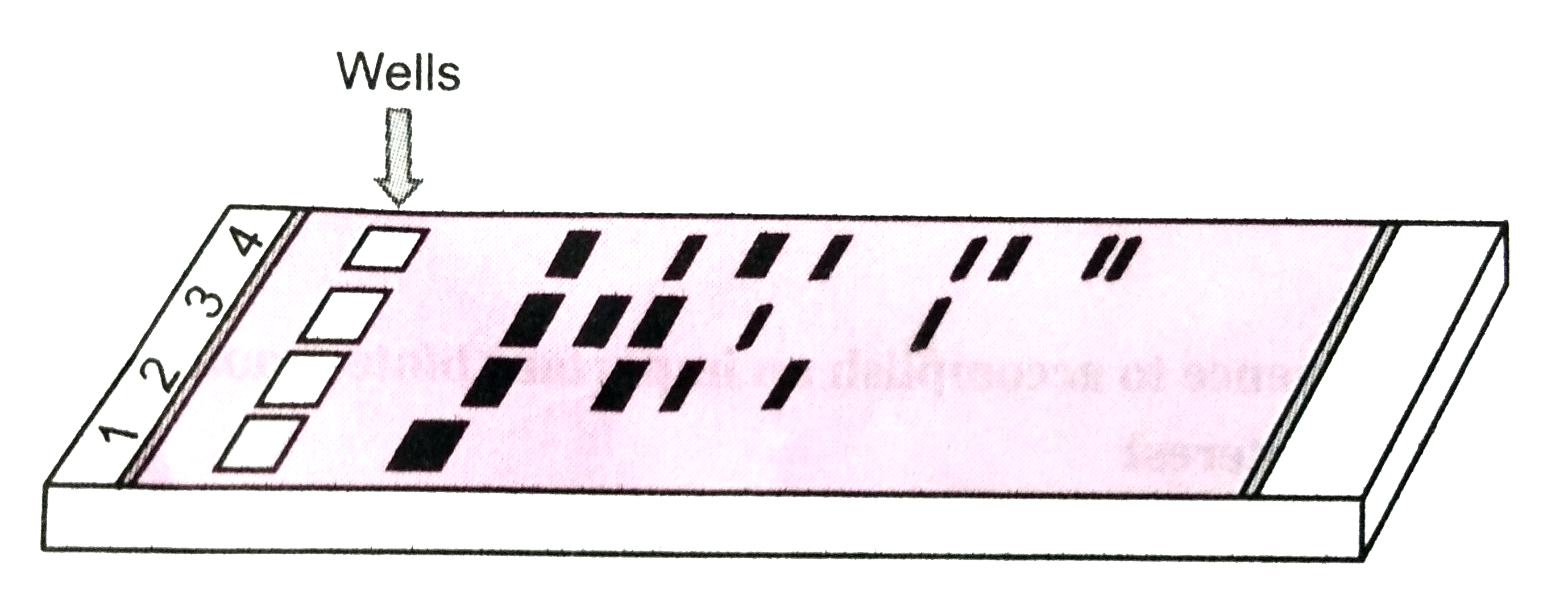Why do DNA fragments move towards the anode during gel electrophoresis ?
Step-by-Step Solution:
1. Understanding Gel Electrophoresis: Gel electrophoresis is a laboratory technique used to separate DNA fragments based on their size. It involves placing DNA samples in a gel matrix and applying an electric current.
2. Charge of DNA: DNA molecules are negatively charged due to the phosphate groups in their backbone. This negative charge is crucial for their movement in an electric field.
3. Application of Electric Field: When an electric current is applied, it creates an electric field across the gel. The gel has two terminals: anode (positive) and cathode (negative).
4. Movement of DNA Fragments: Since DNA is negatively charged, it is attracted to the positively charged anode. Under the influence of the electric field, the DNA fragments move towards the anode.
5. Separation of Fragments: As the DNA fragments migrate through the gel, smaller fragments move faster and travel further than larger ones, leading to their separation based on size.
6. Conclusion: Therefore, DNA fragments move towards the anode during gel electrophoresis because they are negatively charged and are attracted to the positively charged terminal.
---
Similar Questions
What is the criterion for DNA fragments movement on agarose gel during gel electrophoresis ?
View SolutionWhat is the criterion for DNA fragments movement on agarose gel during gel electrophoresis ?
View SolutionChromosomes move towards the pole during
View Solutiona) How do DNA fragments migrate and resolve in a Gel electrophoresis?
b) How lane one is different from lane 2,3 and 4 in the GEL electrophoresis set up?
c) How pure DNA fragments are made observable in the visible light?
 View Solution
View SolutionSeparation and isolation of DNA fragments can be done by a technique called gel electrophoresis. This technique was developed by :
View SolutionHow is DNA made visible in gel electrophoresis?
View SolutionAssertion : Small DNA fragments will arrange towards the positive end after gel electrophoresis.
Reason : DNA is negatively charged.View SolutionA: During gel electrophoresis, the DNA fragments move towards the anode.
R: DNA fragments are negatively charged molecules .View SolutionA: During gel electrophoresis, the DNA fragments move towards the anode.
R: DNA fragments are negatively charged molecules .View SolutionWhich of the following is correct regarding the separation of DNA fragments during gel electrophoresis?
View Solution

